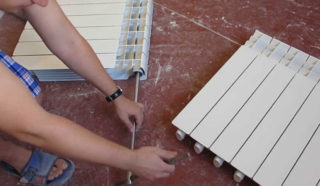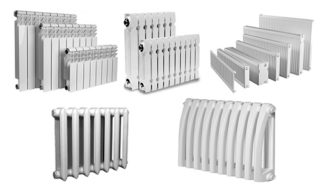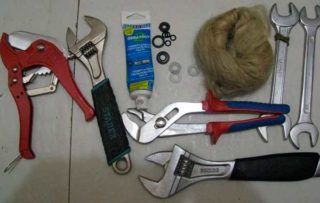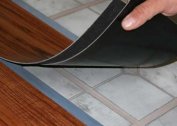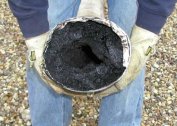With the onset of cold weather, it is often found that the effectiveness of heating equipment in the room is insufficient. The cause is worn radiators, which should be replaced. In some cases, a discrepancy between the number of devices and the area of the room is revealed. At the same time, it is not practical to completely replace serviceable batteries; you can simply add sections.
The nuances of connecting radiators
In some situations, to increase the heating efficiency of rooms, it is necessary to connect heating radiators to each other. A bunch can be done in three ways:
- Serial connection - one pipe is activated. Heaters do not warm up evenly.
- Parallel connection involves the use of two pipes. The bimetallic radiators are connected to each other through the upper and lower bends.
- When connected through, the coolant passes through the heater system, not lingering in the batteries.
The most reliable and economical way to connect two heating batteries to each other is considered to be sequential, the easiest to implement - through and through.
Ways to connect pipes and radiators
To maintain a comfortable temperature in the living room in the cold season, it is necessary to correctly select and connect heating devices. A wide selection is presented on the market: bimetallic, aluminum, cast iron. All of them have various shapes and sizes, differ in terms of heat transfer and type of connection.
- Side type, or one-way connection. The peculiarity of this system is that heat is supplied from the same side of the radiator with which the return pipe is located. This method is used in multi-storey buildings with a vertical supply of heat-transfer fluid.
- The diagonal scheme is characterized by minimal heat loss. With this type of supply pipe is located on one side, water, passing through all sections of the device, comes out on the other side. In this embodiment, the coolant can enter the upper hole and exit through the lower one, or vice versa, enter the lower hole and exit through the upper one. This scheme is used in single or double pipe systems. It is effective when using long batteries (more than 12 sections).
- The lower one is used when it is necessary to hide pipes in the walls or to mount them in the floor. With such a scheme, high heat loss occurs, which is compensated by the choice of a more powerful radiator. It is not recommended to connect the batteries in the lower way with natural circulation of the coolant
The choice of connection type should be approached responsibly, as improper actions will result in significant heat loss. Violation of section connection technology can lead to uneven heating of the battery and even leakage. Therefore, it is important to choose the right heaters and connect them correctly.
Efficient operation of the heating system will save money on fuel.
Types of radiators for strapping
The type of radiators for strapping the living room should be thought out at the construction stage so that the building is prepared in advance for the installation of the entire heating system. Heating appliances differ in several ways.
According to the material used in their manufacture:
- Cast iron was at the peak of popularity in Soviet times and is still often found in apartments. The advantages of this type of device include a long service life and low demands on the coolant - you can use any liquid in them without thinking about its quality. Of the disadvantages, it is worth noting the appearance - such batteries are difficult to fit into the modern design of the room. In addition, the cast-iron radiator has a very low thermal conductivity, which significantly increases fuel costs.
- Aluminum have a diverse design and high thermal conductivity. The only drawback is that the aluminum radiator is very sensitive to water quality. Before use, it should be well filtered.
- Steel can be panel and tubular. The first option belongs to the budget category, but has high heat dissipation. Such radiators are unpretentious, therefore, are widely used in residential and office premises. The second option belongs to the premium category. Such devices have a long service life, high thermal conductivity and attractive appearance.
- Bimetallic have a long service life, have a high level of heat transfer. The only drawback is that bimetal is expensive.
- Copper - the most resistant, they hardly wear out during operation. Design features allow you to use water and antifreeze as a coolant. Such batteries dissipate heat, increasing heating efficiency. The disadvantage is the very high price.
- Plastic - a budget option for those who want to save. They are lightweight, easy to install, quite resistant to wear and inexpensive. The disadvantage is that the coolant should not heat up more than 80 degrees.
When connecting radiators to the heating system, two connection schemes are used. When choosing the wrong method, heat loss can reach 50%.
- The one-pipe scheme allows the use of a minimum number of pipes. A serious drawback is that series-connected devices warm up unevenly. Those located closer to the boiler are heated more strongly, far removed from it, they can remain cold. Such an effect is observed on the first floors of multi-storey buildings, where the coolant moves from top to bottom.
- Two-pipe wiring diagram. Two pipes are used here. One is the coolant supply, hot water from the boiler flows through it, the second is the return, the cooled coolant returns to the heating tank. With this scheme, the batteries warm evenly, which reduces heat loss.
The installation of batteries has its own characteristics because of their type and wall material. For heavy cast-iron radiators, massive holders made of thicker metal should be chosen. For lightweight aluminum, bimetal or steel, thinner brackets are used.
There are also corner radiators. They are mounted in the corner of the room, can have a different design and design option.
Necessary tools and materials for installation
Installing heating batteries is not a difficult process if you have certain skills and a set of tools. To install appliances and connect them to the heating system you will need:
- Torque wrench. It allows you to adjust the twisting force of the thread on metal or plastic pipes.
- Building level. With it, brackets are installed on the walls.
- Rotary hammer and drill for drilling holes for mounting.
- Hammer for driving brackets into the wall.
- A radiator valve is needed for mounting shut-off valves for heating appliances.
- Fum tape for sealing threaded joints.
- Special scissors for cutting polypropylene pipes and a soldering iron for soldering them with elbows, couplings, tees, etc.
When installing heating radiators, it is necessary to observe the accuracy and tightness of all connections. Violation of the installation technology of heating devices can lead to leaks.
The principle of tying polypropylene pipes
Plastic pipes are popular due to their low price and ease of installation. Polypropylene does not rust and therefore is durable. Tying the boiler with such pipes is carried out by hot welding using a special soldering iron.
Antifreeze does not mix well with polypropylene, therefore, water is used as a heat transfer medium with such a strapping.
When choosing plastic piping, the most important point is to consider all the features of a particular building. The installation process itself is not complicated, even a beginner will cope with it. Experienced professionals should be involved in the preparation of the project, since the slightest mistakes and shortcomings can lead, at best, to heat losses and an increase in fuel costs, and at worst, to serious accidents.
